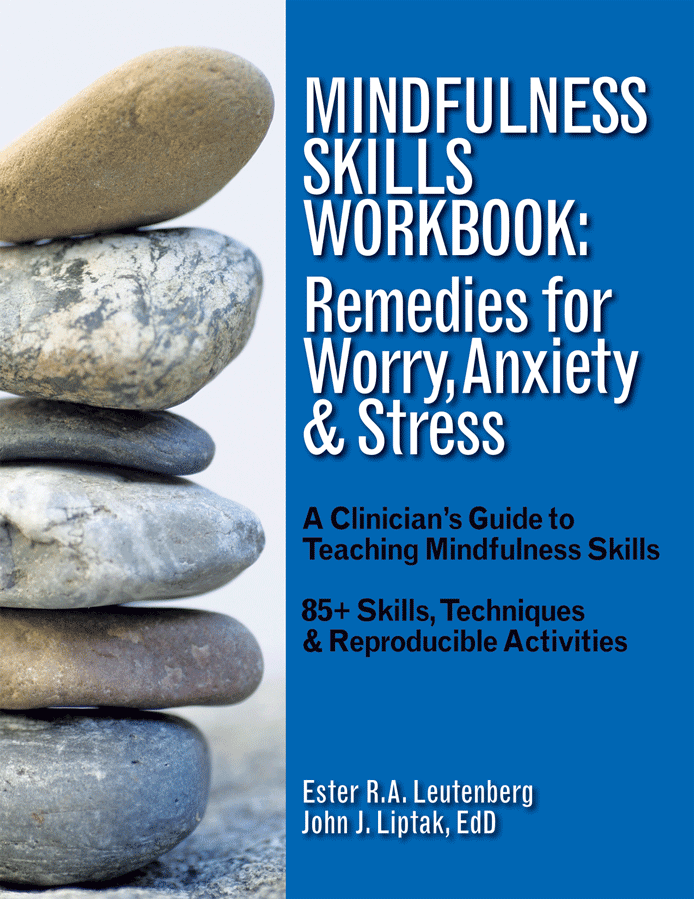Many of us promote the benefits of mindful living and mindful meditation in our practice. To start our discussion on the same page, mindfulness is the process of developing your mind so that it is fully attending to the present moment – to your sensations, emotions, and thoughts, to what you are doing, and to your environment. Some of the characteristics of mindfulness include non-judgmental awareness, paying attention on purpose, remaining non-judgmental, staying in the present, being non-reactive, and remaining openhearted and compassionate (Leutenberg, Liptak, 2019). Merriam-Webster On-line Dictionary defines it as “the practice of maintaining a nonjudgmental state of heightened or complete awareness of one’s thoughts, emotions, or experiences on a moment-to-moment basis.” Being aware of and participating in what is happening in and around you without judgment seems to sum it up nicely.
We teach mindfulness to our clients and encourage them to engage in mindful meditation. Some of the benefits Leutenberg and Liptac cite are:
- Increased acceptance
- Greater awareness
- Less intense reactions
- Relaxed approach
- Calm demeanor
- Mental functioning
In 2012, Daphne M. Davis, PhD and Jeffrey A. Hayes, PhD wrote for the APA, published in July/August 2012, Vol 43, No. 7 defining mindful meditation as doing the following:
- Promotes metacognitive awareness
- Decreases rumination via disengagement from perseverative cognitive activities
- Enhances attentional capacities through gains in working memory
Here are some of the benefits they ascribe to mindful meditation:
- Reduced rumination
- Reduced stress
- Increases focus
- Boosts memory
- Less emotional reactivity
- More cognitive flexibility
- Relationship satisfaction
They listed several other benefits as well not mentioned here.
One of the requirements of modern practice is that we have a tool for noticing the improvement in our clients. We can’t, of course, report improvement unless we understand where our participants are before we start. Published in The Mindfulness Skills Workbook: Remedies for Worry, Anxiety, and Stress, the authors present an assessment to successfully gauge where your client is when beginning. Give it at the end of your sessions to measure progress.
Click here to download the Mindfulness Assessment.
As we continue to work with our clients, we often hear of their struggle to turn their thoughts from autopilot to paying attention to the here and now. Suggest they pay attention to easy things: the texture of dishwater, the smoothness of dishes, the smell of the dishwasher when the door is opened. It seems easy until they try keeping their thoughts on mundane tasks. Doing so, however, is great training for being mindful of larger things: the giggle of children when you play with them, the lovely smell when they come out of the bath, their beautiful faces, their reaction as you read them a new story and so on.
Are You Comfortable Being with Yourself? is an exercise to help clients adjust to being alone with themselves. Explain that it is difficult for people to be alone with themselves and just do nothing. They think things they don’t want to think, rehash the day’s hassles, and can’t turn their minds off. Ask for volunteers from the group to offer what people who feel like that tend to do. (Obsessively check the phone, email, social media, watch non-stop television, or keep themselves busy every moment in some way.)
Click here to download the exercise.
Don’t forget to save some time for you. Work on your own ability to be mindful, then enjoy the fruits of your labor being focused, stress free, having less conflicts, and generally fitting better into your world.
*Much of the information in this article is excerpted from The Mindfulness Skills Workbook: Remedies for Worry, Anxiety, and Stress by John Liptak, EdD, and Ester Leutenberg.

